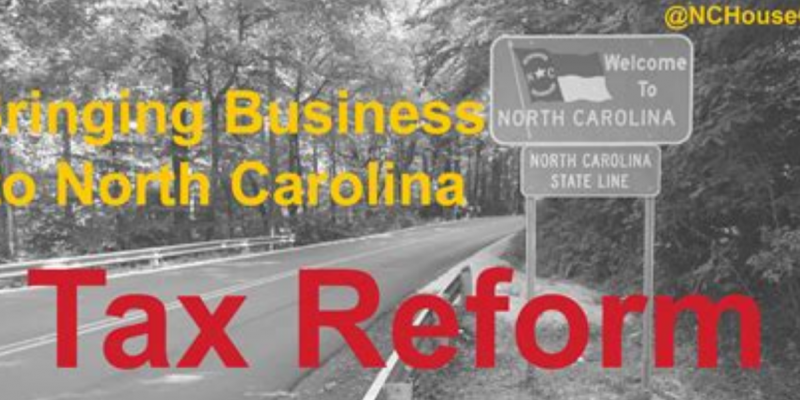Tax reforms and transparency laws have turned around entire state economies over the past decade, a recent report by the Institute for Reforming Government shows. One successful example is North Carolina’s policies that specifically led to increased job creation, spurred economic growth, and increased state revenue.
“Recommendations in this report should serve as a roadmap for lawmakers because it evaluates successful tax reform policies and the process to achieve them, while illustrating the need for tax reform around the country,” Rob McDonald, IRG’s chairman of the board, said.
The report also highlights the four principles of successful tax policy proposed by the nonpartisan Washington, D.C.-based Tax Foundation: simplicity, transparency, neutrality, and stability.
IRG points out that states have been at the forefront of tax experimentation, before the federal government enacted the individual income tax in 1913. They have also led the way in tax reduction and reform measures, the report states.
North Carolina’s economic comeback began in 2010 after voters elected a Republican majority in the state Legislature.
The Legislatures’ 2013 tax reform movement “fundamentally restructured the state’s tax system overnight,” the report states. “Reforms, led by Governor Pat McCrory and the legislative majorities, illustrate how quickly bold, smart reforms can lead to growth and prosperity,” IRG says.
North Carolina had one of the most uncompetitive tax codes in the nation prior to 2013 reform, IRG points out, with the highest individual income tax bracket in the Southeast at 7.75 percent.
According to the Tax Foundation, North Carolina’s total state and local tax burden was the 20th highest in the nation and higher than all but one of its competitor states in Fiscal Year 2012. The tax climate for job producers was worse, having the highest corporate income tax rate in the Southeast of 6.9 percent.
Some reforms included consolidating the state’s three individual income tax brackets into one, reducing the top rate of its flat tax, increasing the standard deduction, lowering the corporate income tax, and broadening the state sales tax structure.
The 2013 reform package cut taxes more than $500 million in the first two years, followed by additional legislation in 2015 that reduced the personal income flat tax.
In 2017, the Legislature passed additional tax cuts, vetoed by Democratic Gov. Roy Cooper, and overridden, enabling additional lowering of taxes.
The 2018 legislative session marked the fourth consecutive year of tax reforms, including a surplus returned to taxpayers resulting from the 2017 Tax Cuts and Jobs Act.
Since instituting tax reforms, North Carolina has led the nation in GDP growth, posting a record 13.4 percent increase, IRG says.
In 2014, Forbes ranked North Carolina as the third best state for business and then the second best state for business in 2015.
“The correct approach to reform is dependent upon the unique tax bases, budget priorities, and fiscal structure in each state,” the authors of the report say. “Successful tax reform is not simply about reducing tax rates. It must consider how lower tax rates will broaden the tax base by attracting more families, jobs, and new businesses that in turn will provide revenues to pay for necessary government services.”
Pointing to other successful policies, IRG recommends that state legislatures enact taxpayer controls to limit spending or other policy changes before lawmakers can increase taxes. It also suggests that they simplify tax laws by reducing and combining tax brackets, reduce tax rates on personal income and business income, and broaden the tax base, among other measures.
Advertisement
Advertisement

